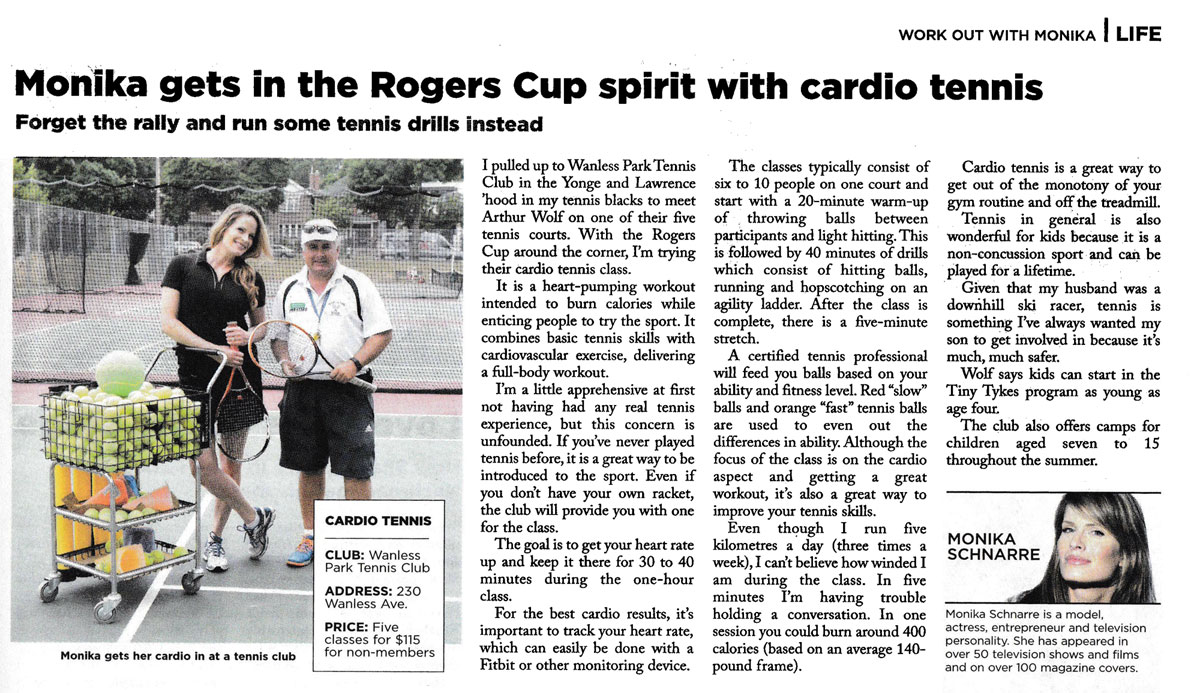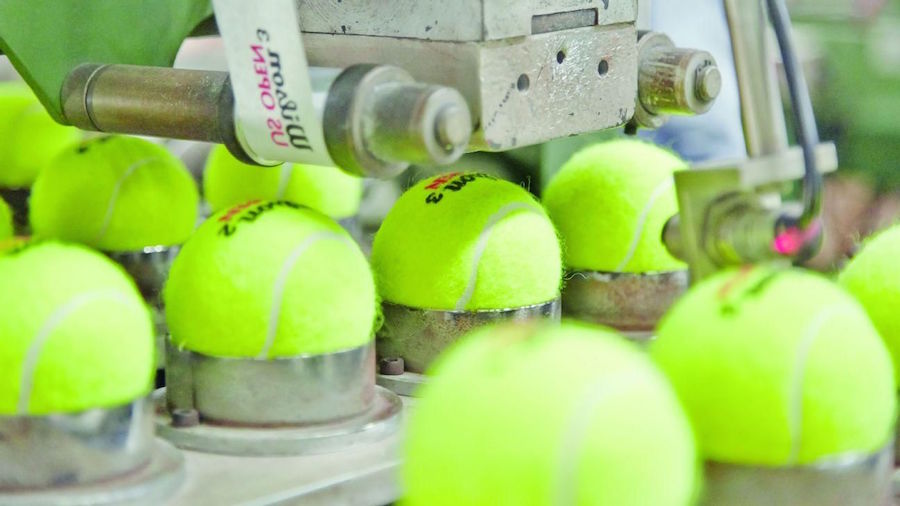The Myth of Form
MYTH – To play tennis properly you must have the correct form.
TRUTH – There is no single correct form.
Every good player adapts so as to maximize their outcomes based on multiple variables such as physicality, timing, and judgement. Within the professional game you will see a wide range of acceptable technical ways to strike the ball. The one provisos is that the range of adaption needs to avoid injuries.
Experienced teaching professionals can aid their students in adapting individual technique taking into account limits to physicality, timing, and judgement.
Students may need to adjust one of these variables in order to achieve a particular technique. Sometimes this is not possible. I had a 5 foot 5 inch gentleman request lessons so he could develop a Milos Raonic (6 foot 5 inch) serve.
If you are over 55 years of age do not expect to have the same timing you had at 35 and one of the most under developed teaching areas is to improve student shot selection or judgement which for many adult club players can be a game changer.
In the end, build your game to maximize outcomes, use technique that fits within a range that ensure injury free play.
Doubles Talk
My partner makes a lot of volley errors causing us to lose service games?
Did you know that if you serve wide there is a higher probability that the return will be wide, mid court and back to the server. If as the server you would prefer to have the return hit back to you rather than have your partner try and volley; serve mid pace and wide.
My opponents like to lob incessantly. What can we do?
Lobs are easiest to hit from the baseline. A lob can only be successful if an overhead cannot be hit off it. Play both up just inside the service line to reduce the lobbers target area and increase the overhead opportunities. Hit short balls so your lobbing opponents have to move up making them play from a position they are less comfortable in.
I play with one partner and we lose points down the middle of the court all the time. I am to the point I’d rather play with someone else.
Before giving up, explain to your partner that 80% of balls hit in doubles travel through the middle of the court. Psychologically, your partner may be so worried about your reaction to them getting passed that they are covering the statistically wrong area of the court. In your next set, offer to give them a quarter, for every time they are passed for a winner when as a team you are both up. You won’t go broke and may save your partnership.
In 2017, look for our doubles strategy clinics throughout the season.
Monika Schnarre reviews Cardio Tennis at Wanless
Recent article in The Post “Life” section. A review of Wanless Tennis Cardio Clinics by Monika Schnarre.
Tennis Ball Production
Ever wonder how all those tennis balls are made? Watch this interesting video to see the many steps involved in the process.
Kids tennis needs kids courts!
In 2012, the International Tennis Federation changed the “Official Rules of Tennis” to include specific rules for 10 and under competition. This was a change heard around the world facilitating the addition of blended lines to tennis courts. Many national sports bodies responsible for tennis such as the USTA and Tennis Canada provided grants to help facilities comply with the new rules.
In the United States 2,709 courts for 10 and Under Tennis (36’ and 60’) were built or lined in 2014.
The following link by Tennis Canada shows some Canadian clubs taking advantage of the grants.
If you are vacationing note whether the courts you are using have blended line. Many players do not even notice them.
Tennis positively affects your health
TENNIS AND HEALTH
- People who participate in tennis three hours per week (at moderately vigorous intensity) cut their risk of death in half from any cause. (Dr. Ralph Paffenbarger, Harvard University School of Public Health)
- Exercise such as playing singles tennis briskly for 30 minutes or longer, 3 to 4 times a week, can help condition the heart and lungs. (American Health Association)
- Tennis builds strength in upper body, legs, hips and abdomen and improves speed and overall flexibility. (Vitality Magazine)
- Since tennis requires alertness and tactical thinking, it may generate new connections between nerves in the brain and thus promote a lifetime of continuing development of the brain. (Scientists at the University of Illinois)
- Tennis outperforms all other sports in developing positive personality characteristics and physical fitness development. (Dr. Jim Gavin, Concordia University, author of The Exercise Habit)
- Competitive tennis burns more calories (528 to 610 for an hour of singles) than aerobics, inline skating, or cycling, according to studies on caloric expenditures.
- Tennis participation has tremendous physiological and psychological benefits for older individuals. (Dr. James Rippe, Rippe Lifestyle Institute)
- Tennis players scored higher in vigor, optimism and self-esteem while scoring lower in depression, anger, confusion, anxiety and tension than other athletes or non-athletes. (Source: Dr. Joan Finn, et al., Southern Connecticut State University)
Doubles mantra – “Deep to deep and short to short”
When playing club level doubles we often see one player up and one player back on both teams. If you experience this then keep in mind that the deep player should always hit to the deeper opponent. If the short player is given the ball then they want to hit it at the opponent closer to the net.
Deep to deep and short to short
A common mistake made is hitting from the baseline to the opponent’s net player. This is often a fatal mistake resulting in the loss of the point.
Why Self Rating is Hard
Why is it so tough for players to rate themselves according to the NTRP rating system?
I would argue that recreational players find it hard to rate themselves due to the following:
- skill level varies day by day
- variability between various stroke ( 4.0 serve, 4.5 forehand, 3.0 overhead, etc)
- lack ability to vary tactics according to opposition
- preference for doubles versus singles (4.0 doubles and 3.5 singles)
- people tend to over or under rate themselves based on their current mood and confidence level
All of these variables create a continuum of overall ability. What really counts is the ability to quickly size up an opponent and locate weaknesses so as to achieve tennis success.
Just as important is the ability to try and “hide” ones own weaknesses.
This explains why people find it hard to play a left hander for example. The skilled left hander will try and set up cross court exchanges between their forehand and their opponents backhand whenever possible. Typically the forehand gives the advantage to left hander. The ability to do this consistently may actually raise a persons rating.
By effectively playing against an opponents weakest strokes a 4.0 player can effectively play a 3.0 player most of the time, or at key points in the match.
Please keep this in mind the next time you take to the courts.
Dynamic Warmup Exercises
The dynamic warm-up is a critical part of preparing the body to play tennis – whether it is practice or a competition. Learn dynamic warm-up exercises you can use to enhance your tennis play.
Here are a set of dynamic exercises courtesy of the USTA website.
Tips for Winning Doubles Play
Tips for Winning Doubles
- Look for attacking opportunities – be patient.
- Identify opponent weaknesses – don’t play to their strengths
- Communicate with your partner between every point
- Develop a deep lob to defend with
- Rely on 1st service placement rather than power
- Protect the middle and force opponents to hit lower percentage shots wide
- Develop a 1/2 volley so as to transition forward beyond the service line



